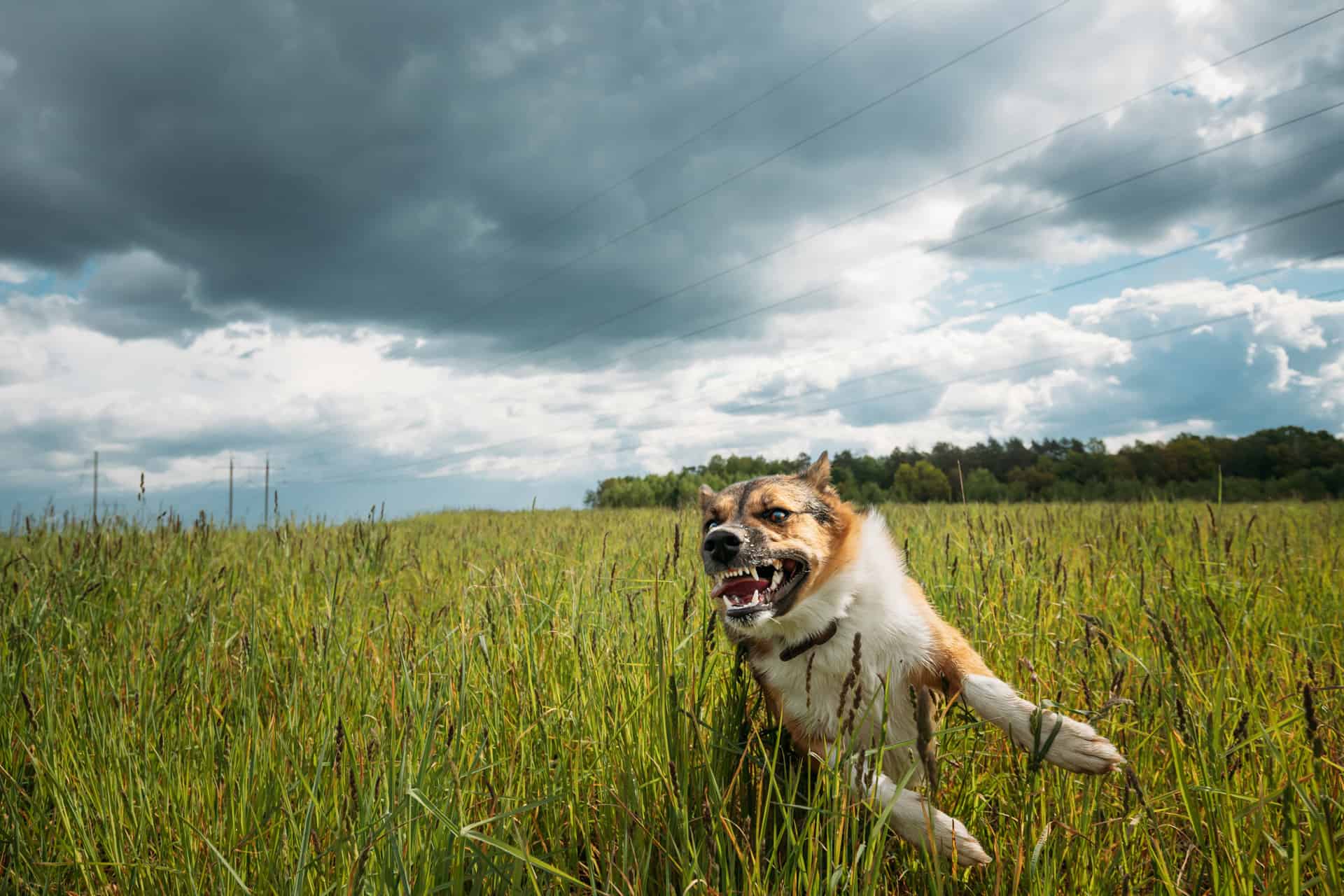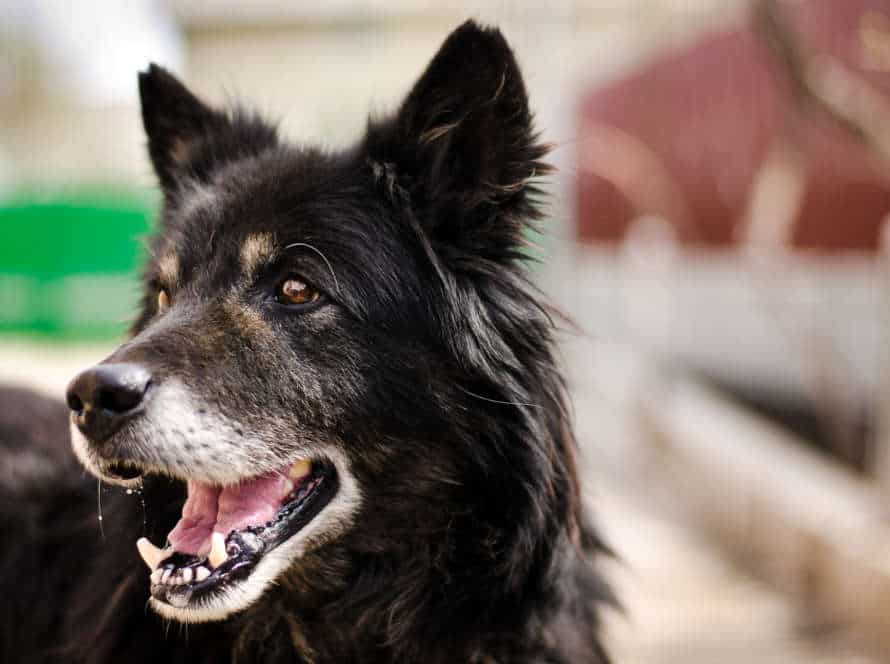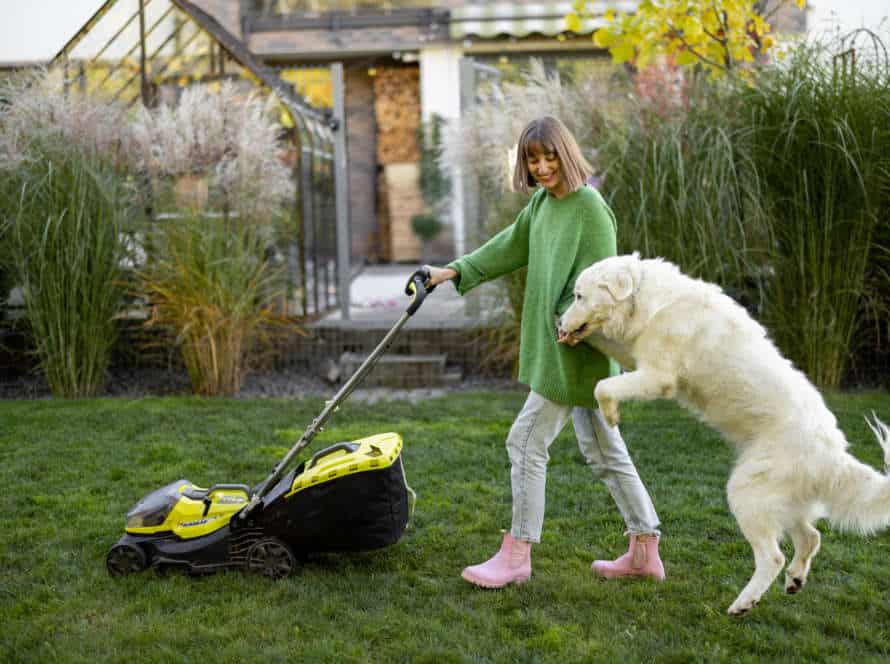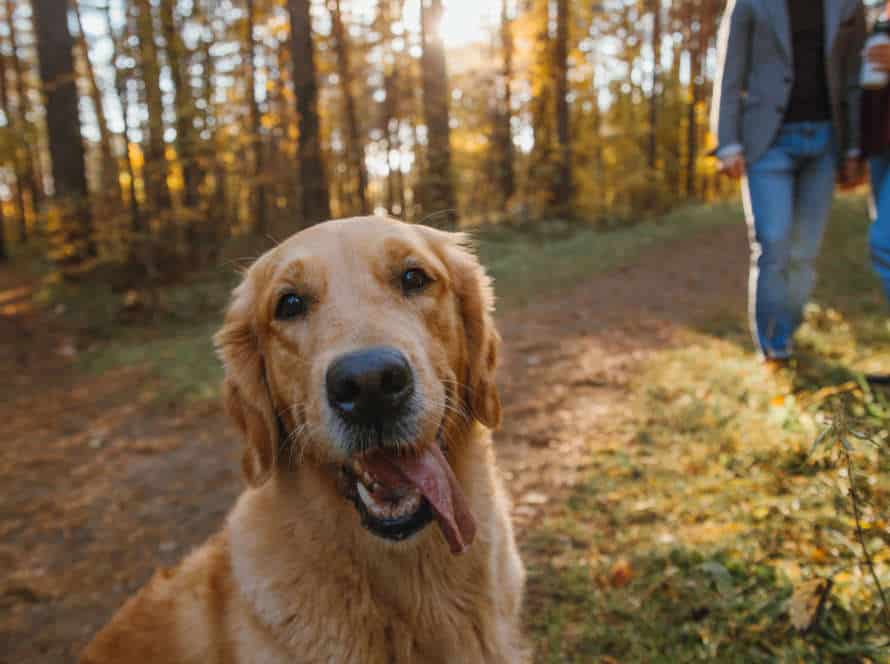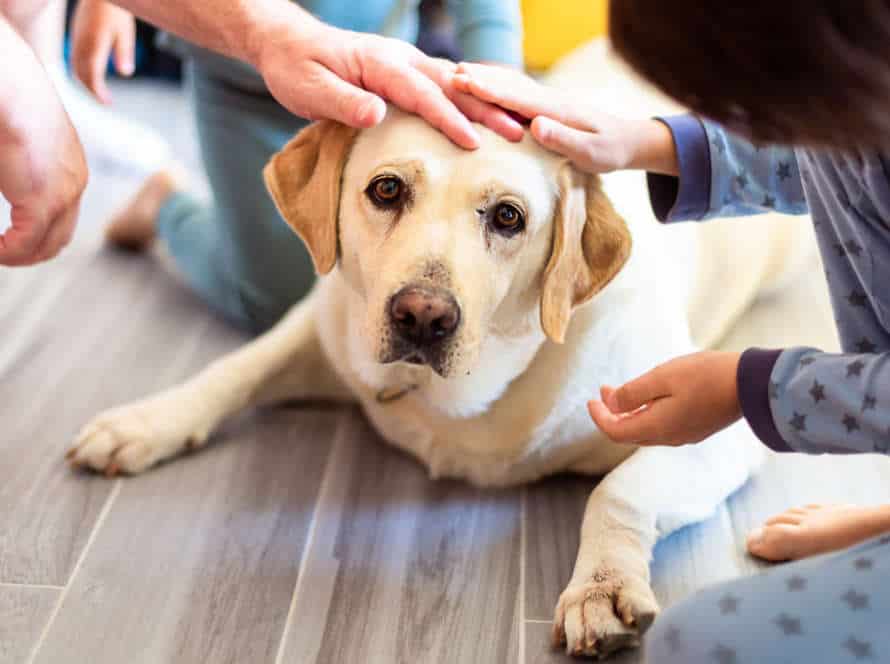Fear-Based Aggression: When Anxiety Strikes
Fear-based aggression in dogs is a common issue. It’s caused by anxiety and stress, often from external stimuli.
Examples of this include loud noises, unknown animals, and people.
Signs of this aggression include dilated pupils, trembling, pinned back ears, raised hackles, licking/yawning, growling/barking, and biting/snapping.
To help, you should find the triggers causing the fear. Work to desensitize them through positive reinforcement training. Seek help from a dog trainer or behaviorist. They can create a plan and provide tools to manage your dog’s anxiety.
Remember: don’t punish or scold your dog. That will only make their anxiety/aggression worse.
Understanding Fear-Based Aggression
Fear-based aggression is common in pets, specially dogs. To address it, we need to understand the root cause. Generally, fear-based aggression is caused by anxiety. If left untreated, it can lead to more serious issues. In this article, we will learn about some of the common causes of fear-based aggression and the proper ways to deal with it.
What is Fear-Based Aggression?
Fear-based aggression is a type of aggressive behavior seen in animals, including dogs. It is hard to diagnose and requires careful observation.
It occurs when dogs feel overwhelmed, anxious, or threatened. This can be caused by loud noises, new environments, or interactions with strangers or other dogs.
Understanding fear-based aggression is important for pet owners! It can lead to dangerous situations and should be addressed.
Training, socialization, and management techniques can help manage it and improve the dog’s life quality and the owner’s.
Pro Tip: If your dog has fear-based aggression, get help from a professional dog trainer or behaviorist. Create a tailored training program for your pet.
Causes of Fear-Based Aggression
Fear-based aggression in dogs can have many sources. These include anxiety, fear, lack of socialization, and inadequate training. Here are the most common ones:
- Socialization: Dogs must be exposed to different environments, people, and animals during their critical socialization period. Otherwise, they may get scared of strangers, new objects, and unfamiliar situations. This can lead to fear-based aggression.
- Genetics: Some breeds are more prone to fear and anxiety due to their genetic makeup, such as the German Shepherd and the Siberian Husky.
- Trauma: Abuse, neglect, or traumatic events can cause fear and aggression in dogs as a defensive reaction.
- Medical conditions: Certain medical conditions or chronic pain can cause fear and aggression in dogs by changing their behavior and mood.
To treat and prevent fear-based aggression in dogs, it’s key to understand the underlying causes. In severe cases, help from a professional dog trainer or behaviorist may be necessary.
Recognizing the Signs of Fear-Based Aggression in Dogs
Dogs can show fear-based aggression when they are anxious and scared. Recognizing the signs quickly is important to stop aggressive behavior. Here are some common signs:
- Body postures like cowering or trembling.
- Growling, barking, or snarling when people come close.
- Biting or snapping if they feel threatened.
- Trying to escape or hiding in corners or under furniture.
It’s important to tackle fear-based aggression in dogs early. Positive reinforcement training, behavioral modification, and help from a professional dog trainer or behaviorist are key.
Prevention of Fear-Based Aggression in Dogs
Fear-based aggression in dogs is a challenging issue. It can cause behavior that is both rapid and unexpected, which can be hazardous for the pooch and its master. Thankfully, there are steps one can take to reduce the risk of fear-based aggression and even stop it from happening.
Early Socialization and Training
Early socialization and training are crucial in stopping fear-based aggression in dogs. This aggression is common, and can cause severe issues if not handled fast.
Socialization training should occur when the pup is between 3-14 weeks old. This helps them be comfortable with social interactions. Introduce the dog to different sights, sounds, and people during the socialization period. It prevents fear in later life.
Begin training early, so the dog forms good behavior patterns and habits from a young age.
Fear-based aggression can come from lack of socialization or tough experiences. It can be set off by environmental changes, loud noises, or strangers.
Stay calm and consistent when facing fear-based aggression. Physical punishment should be avoided. If symptoms persist, a professional dog behaviorist should be contacted.
Pro tip: Early socialization and positive reinforcement training help stop fear-based aggression in dogs. This leads to a safe and happy companion.
Positive Reinforcement Techniques
Positive reinforcement can be a great way to stop fear-based aggression in dogs when they are scared, anxious, or threatened. To help with this, here are some techniques:
- Counter-conditioning: Using positive reinforcement, you can change the dog’s reaction to something they’re scared of. If you pair it with something good, the dog will learn to feel safe.
- Desensitization: This is about introducing the dog to the thing they’re scared of, but slowly, and in a controlled way. Positive reinforcement can help them adjust.
- Distract and redirect: You can use positive reinforcement to take the dog’s focus away from the thing they’re scared of. This is especially useful for anxiety that is ongoing, like separation anxiety.
Remember, to get results with positive reinforcement, you need to be consistent and patient. A qualified trainer can help you and your pup conquer their fear and prevent fear-based aggression.
Desensitization and Counter Conditioning
Desensitization and counterconditioning can help stop fear-based aggression in dogs. Fear-based aggression happens when a dog experiences something or someone that causes fear or anxiety.
Desensitization involves introducing the dog to what causes fear at a low intensity and slowly making it more intense.
Counterconditioning changes the dog’s emotions towards the stimulus. This is done by combining it with something enjoyable, like treats or toys.
These techniques need patience and time. But with regular use, they can prevent fear-based aggression and make your dog feel safe.
Tip: Get help from a professional dog trainer to make sure these techniques are used correctly and safely.
Treatment of Fear-Based Aggression in Dogs
Fear-based aggression in dogs is a common issue. Left unresolved, it can damage their behavior and well-being. Treating it can be complex, due to the anxiety behind it. However, with the correct approach, it’s possible to greatly reduce or even get rid of fear-based aggression.
Let’s explore some steps for treatment:
- Identify the trigger – The first step is to identify the trigger or the cause of the fear-based aggression.
- Socialization – Socialization is essential to reduce fear and anxiety in dogs. Introduce them to new people, pets, and sights in a calm and controlled environment.
- Desensitization – It’s the process of exposing your dog to the trigger in decreasing levels of intensity. It can be highly effective in reducing fear-based aggression.
- Counter-conditioning – It involves changing the way your dog feels about the trigger. Giving treats or playing with them can help them associate the trigger with positive experiences.
- Working with a professional – A professional trainer or a behaviorist can help identify the trigger and the appropriate treatment plan for your dog’s fear-based aggression.
Medications for Anxiety and Aggression
A veterinarian may prescribe medications to manage fear-based aggression in dogs. This type of aggression occurs when a dog feels anxious, threatened, or cornered, and can result in unprovoked biting or snapping.
There are several medications available which can help to reduce anxiety and aggression levels in dogs:
- Benzodiazepines – These reduce anxiety and help the dog relax, making it less reactive in stressful situations.
- Tricyclic Antidepressants – These regulate mood and behavior, lowering anxiety and aggression.
- Selective Serotonin Reuptake Inhibitors – These regulate serotonin levels in the brain, reducing anxiety and aggression.
- Beta-Blockers – These control heart rate and blood pressure, aiding in reducing anxiety-related symptoms.
It is important to note that these medications should only be prescribed by a veterinarian. They should also be used alongside behavioral training for the best results.
Working with a Professional Trainer or Behaviorist
Tackling fear-based aggression in dogs can be tricky. Working with a pro-trainer or behaviorist can significantly improve your pup’s health and life quality.
A professional could aid you by:
- Assessing the behavior patterns and triggers of your dog.
- Making a custom behavior modification plan for your canine’s anxiety and fear.
- Implementing training activities to bolster your pup’s confidence and trust.
- Giving instructions and support to help you sustain positive behaviors and manage your dog’s triggers.
With the help of an expert, a scared and aggressive dog can learn how to handle their anxiousness and enjoy a more content, healthier existence.
Alternative Therapies for Fear-Based Aggression
Fear-Based Aggression is often seen in pet dogs. Fortunately, there are many alternative therapies that can help treat it. Such as:
- Desensitization and Counterconditioning – Gradually exposing your dog to the stimulus causing fear-based aggression and providing positive reinforcement.
- Bach Flower Remedies – Plant-based remedies to help calm and reduce anxiety.
- Homeopathy – Administering small doses of natural substances to ease anxiety and fear.
- Acupuncture – Placing needles at strategic points on your dog’s body to reduce stress and promote relaxation.
- Aromatherapy – Using essential oils to calm and reduce anxiety.
It’s important to use these therapies together with proper training and behavior modification techniques for best results.
Handling Fear-Based Aggression in Dogs
Fear-based aggression in dogs can be tricky. It’s a must to comprehend what can cause the fear and the right way to tackle it. By carefully watching and understanding dog behavior, you can learn to act suitably when faced with fear-based aggression and help your pup through anxious times.
Avoiding Triggers or Anxiety-Inducing Situations
Fear-based aggression in dogs can be sparked by certain situations or stimuli. As a pet owner, you can take steps to stop these triggers and minimize fear-based aggression in your pet.
Here are some tips:
- Figure out the triggers: Observe what causes your dog to get anxious and aggressive, like noise or new people.
- Make a safe place: Give your dog a special spot where they can go when they feel threatened or stressed.
- Avoid the triggers: Once you know what sets off their fear-based aggression, stay away from those situations or things.
- Positive reinforcement training: Praise and give treats to your dog when they are calm and behave well.
By following these tips, you can help your dog have more security and reduce fear-based aggression.
Techniques for Handling An Aggressive Dog
Dealing with an aggressive pup can be tough for any pet owner. If your pooch is growling, barking, or biting, it’s vital to take action right away to ensure the safety of everyone around. Here are some tips:
- Stay Cool: Dogs sense when you’re nervous or scared, and this can worsen their aggression. Try to stay cool and firm when managing an aggressive doggo.
- Set Rules: Speak to the pup in a confident voice and set clear rules. This helps the pup understand you’re in control of the situation.
- Don’t Stare: Looking into an aggressive pup’s eyes can trigger a defensive reaction. Focus on the pup’s body language instead.
- Find Expert Help: If the pup’s aggression is intense or you don’t know how to handle it, seek help from a professional dog trainer or behaviorist.
Never dismiss aggressive behavior in pups! Prompt action and expert help can often solve the issue and stop future incidents.
Legal Considerations for Owners of Aggressive Dogs
It’s essential to consider legal matters when managing fear-based aggression in dogs. Pet owners must ensure that others are not put at risk. Legally, they should:
- Understand their local laws. Anything such as training or muzzling could prevent their dog from harming others.
- Check their home insurance policy. If their dog injures someone, they must be covered. Insurance companies may refuse coverage if the pet has a history of aggression. The pet owner must disclose any aggressive tendencies of the pet to their insurance provider.
By proactively addressing legal considerations, potential problems can be avoided and the likelihood of their pet causing harm is reduced.
Frequently Asked Questions
What is fear-based aggression?
Fear-based aggression is a type of behavior seen in animals, including dogs, that occurs when they feel threatened or fearful. This can result in defensive biting or snapping, as well as other aggressive behaviors.
What causes fear-based aggression?
Fear-based aggression in animals is generally caused by anxiety or fear, often stemming from past traumatic experiences. This can include abuse, neglect, or other situations that cause an animal to feel threatened or unsafe.
How can fear-based aggression be treated?
Treatment for fear-based aggression in animals typically involves behavior modification techniques, such as positive reinforcement training, as well as medication to help alleviate anxiety and fear. In some cases, consulting with a professional animal behaviorist may also be recommended.
Can fear-based aggression be prevented?
While it may not be possible to completely prevent fear-based aggression in animals, there are steps that can be taken to reduce the risk. This includes providing a safe and stable environment, socializing animals at a young age, and using positive training methods.
What should I do if my dog exhibits fear-based aggression?
If your dog exhibits fear-based aggression, it is important to seek professional help from a veterinarian or animal behaviorist. They can provide guidance on how to safely manage your dog’s behavior and develop a treatment plan that is tailored to their specific needs.
Is fear-based aggression dangerous?
Fear-based aggression can be dangerous if not properly managed, as it can result in bites or other aggressive behaviors. It is important to take the necessary steps to address and treat fear-based aggression in animals in order to prevent harm to both the animal and their human companions.

